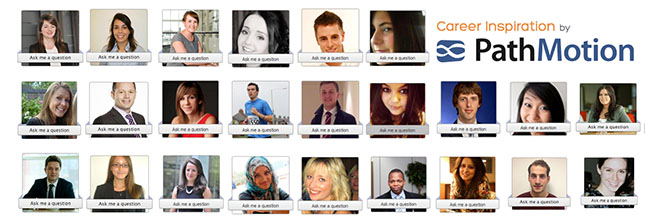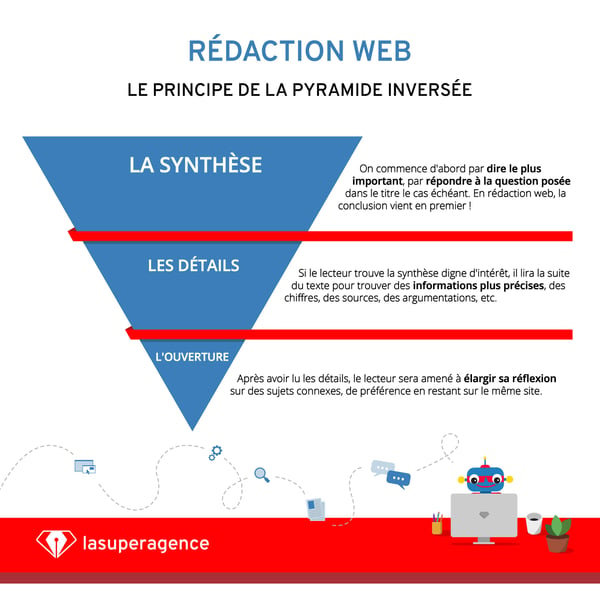The war for talent waged by major groups requires ever greater ingenuity on the part of companies to stand out in their recruitment strategy.
In this vast struggle, Content Marketing comes to play a key role in building the employer brand image, an essential lever for digital recruitment.
If you're a recruitment professional, you've probably asked yourself this question at some point: "How can I better use this great tool called the Internet to attract more candidates, and especially the best candidates?"
In a "tool" approach, we have already told you about the 30 French technology companies that provided the most innovative solutions in terms of digital recruitment like Pathmotion or Work4.

At the Super Agency, we put forward a methodological approach, totally new in France, called Inbound Recruiting.This one is essentially based on using the techniques used inInbound Marketing and inContent Marketing to attract customers. In the case of Inbound Recruiting, the goal is of course to target candidates, especially passive candidates.
If you're convinced by the effectiveness of these approaches (and the numbers prove they work great!), we've got 7 steps you can take to implement your own content strategy for your candidates.
Step 1 - Have a really good strategy
I can already imagine you rolling your eyes and exclaiming, "Haaaa, but it's so obvious. We already have a strategy!".
Surely, but is it good?
Everyone can produce content, but you have to make it meaningful to succeed.
To do this the history and culture of the company must be the starting point for all communication. The message must be put in place in consultation with Human Resources to develop an effective and efficient communication strategy; with Human Resources to develop a content marketing strategy based on the Candidate Personathat will define all communications around the employer brand.

Step 2 - Have a blog (and feed it regularly)
A blog allows you to showcase different offerings, amplify employer branding and answer readers' questions.
By hosting it with regularity, you will be able to establish your credibility in your industry on topics relevant to target candidates.
Show your expertise by addressing timely topics.
In form, structure your content according to the inverted pyramid principle:

Also include a Call-to-Action that encourages your visitors to comment, subscribe to your newsletter or learn more about your business.
Also be consistent in the frequency of posts, whether it's once or twice a week (ideally), every two weeks or once a month. Once you have your schedule in place, stick to it.
Step 3 - Know how to tell your own story
Future recruits like to know why working at your organization is meaningful, exciting and aligned with their aspirations. Candidates like working for a company whose values they share.
For example, go behind the scenes of your company by revealing a typical day at the office.
In passing, emphasize the many benefits of corporate life at your company. Emphasize the points that are important to your target candidates career development opportunities, talent recognition or flexible hours.
Step 4 -Be social
Share the content you produce on your company's Linkedin page aas well as other social networks valued by your Candidate Persona ,by linking to your career pages.
Passive candidates should be exposed to a consistent employer brand message on a regular basis.
Also encourage sharing from employees and use them as ambassadors. The more involved they are, the more enthusiastic they will be about promoting your employer brand. However, try to keep job postings to a minimum, where your employees may feel like the pass-the-buck.
Also, a perpetual stream of job postings gives the impression of a desperate company and encourages passive candidates to look elsewhere.

Step 5 -Reuse, reallocate and republish
If you tend to create articles, think about how the content can be adapted and repurposed to fit in different formats. For example, take the information on your blog to create PowerPoint presentations, make videos, adapt into infographics, or cut up into tweets.
You can also invite your readers to discuss your content in a webinar. What's called evergreen-content can have an almost unlimited shelf life. These tips and tricks can be reposted for very long periods.
Your blog statistics data will help you identify your most popular posts.
Step 6 - Create talent communities
Develop targeted and interesting campaigns on social networks. If they are relevant and well timed, they can reach candidates with the skills and experience your company needs.
Curate content on a weekly or bi-weekly basis, send newsletters featuring your latest blog posts, notifications and upcoming webinars. You'll also be able to share recent information about your business.
With an audience accustomed to your regular communication, it will be much easier to hire new recruits the next time you have specific recruiting needs.
Step 7 - Measure success
Track engagement data across media and observe changes to adjust your content marketing campaigns more effectively.
Your Inbound Recruiting strategy should be regularly measured and adjusted to ensure a steady stream of qualified candidates into your engagement tunnel.
By properly targeting your content strategy, you'll attract passive talent to your brand, build trust and improve your employer brand.








